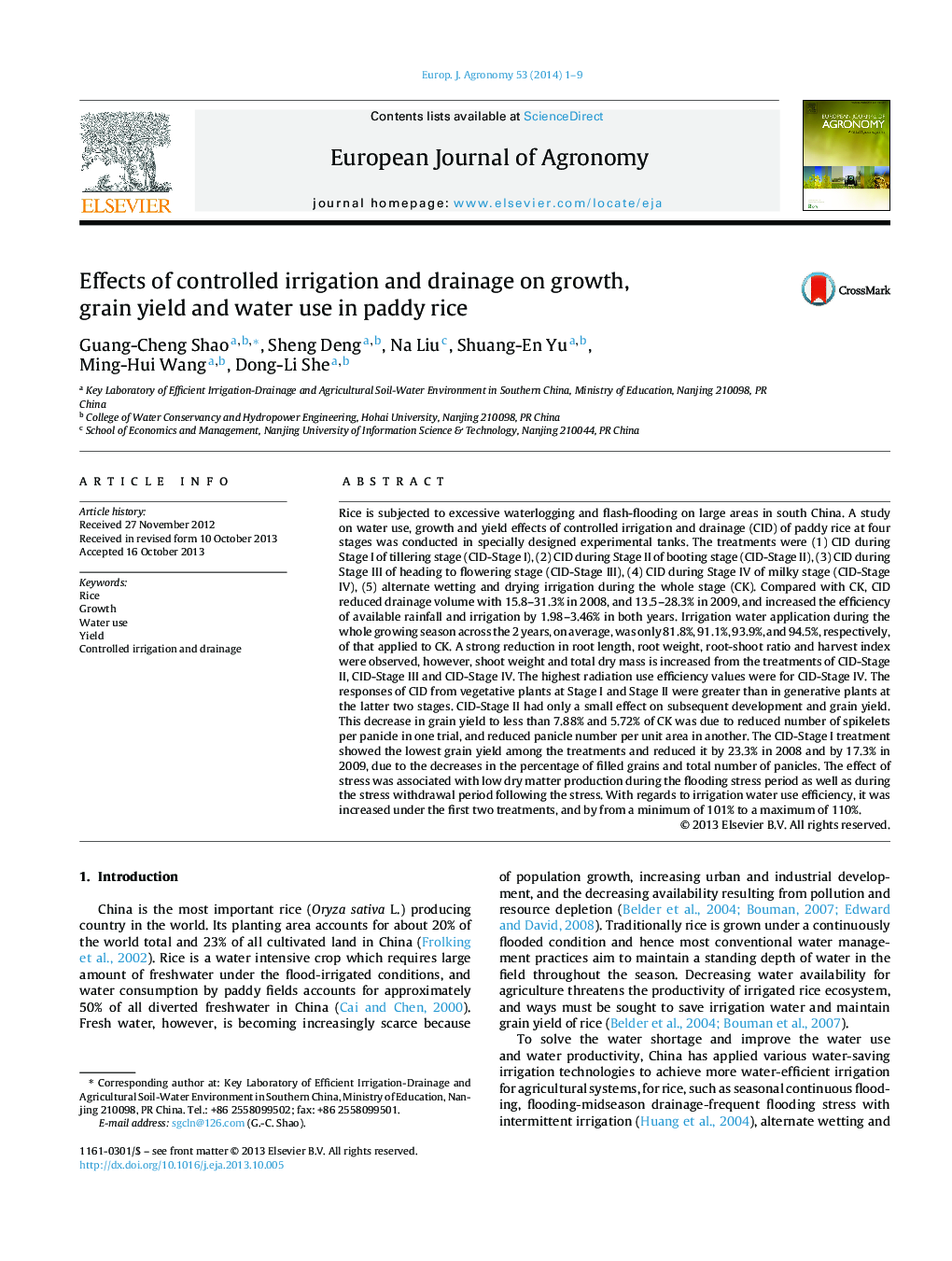| کد مقاله | کد نشریه | سال انتشار | مقاله انگلیسی | نسخه تمام متن |
|---|---|---|---|---|
| 4508987 | 1624472 | 2014 | 9 صفحه PDF | دانلود رایگان |
• CID could reduce drainage volume and markedly increase the efficiency of available rainfall and irrigation.
• A strong reduction in root length, root weight and root-shoot ratio were observed in CID treatments.
• The highest radiation use efficiency values were for CID-Stage IV.
• CID-Stage II had only a small effect on subsequent development and grain yield compared to CK.
Rice is subjected to excessive waterlogging and flash-flooding on large areas in south China. A study on water use, growth and yield effects of controlled irrigation and drainage (CID) of paddy rice at four stages was conducted in specially designed experimental tanks. The treatments were (1) CID during Stage I of tillering stage (CID-Stage I), (2) CID during Stage II of booting stage (CID-Stage II), (3) CID during Stage III of heading to flowering stage (CID-Stage III), (4) CID during Stage IV of milky stage (CID-Stage IV), (5) alternate wetting and drying irrigation during the whole stage (CK). Compared with CK, CID reduced drainage volume with 15.8–31.3% in 2008, and 13.5–28.3% in 2009, and increased the efficiency of available rainfall and irrigation by 1.98–3.46% in both years. Irrigation water application during the whole growing season across the 2 years, on average, was only 81.8%, 91.1%, 93.9%, and 94.5%, respectively, of that applied to CK. A strong reduction in root length, root weight, root-shoot ratio and harvest index were observed, however, shoot weight and total dry mass is increased from the treatments of CID-Stage II, CID-Stage III and CID-Stage IV. The highest radiation use efficiency values were for CID-Stage IV. The responses of CID from vegetative plants at Stage I and Stage II were greater than in generative plants at the latter two stages. CID-Stage II had only a small effect on subsequent development and grain yield. This decrease in grain yield to less than 7.88% and 5.72% of CK was due to reduced number of spikelets per panicle in one trial, and reduced panicle number per unit area in another. The CID-Stage I treatment showed the lowest grain yield among the treatments and reduced it by 23.3% in 2008 and by 17.3% in 2009, due to the decreases in the percentage of filled grains and total number of panicles. The effect of stress was associated with low dry matter production during the flooding stress period as well as during the stress withdrawal period following the stress. With regards to irrigation water use efficiency, it was increased under the first two treatments, and by from a minimum of 101% to a maximum of 110%.
Journal: European Journal of Agronomy - Volume 53, February 2014, Pages 1–9
